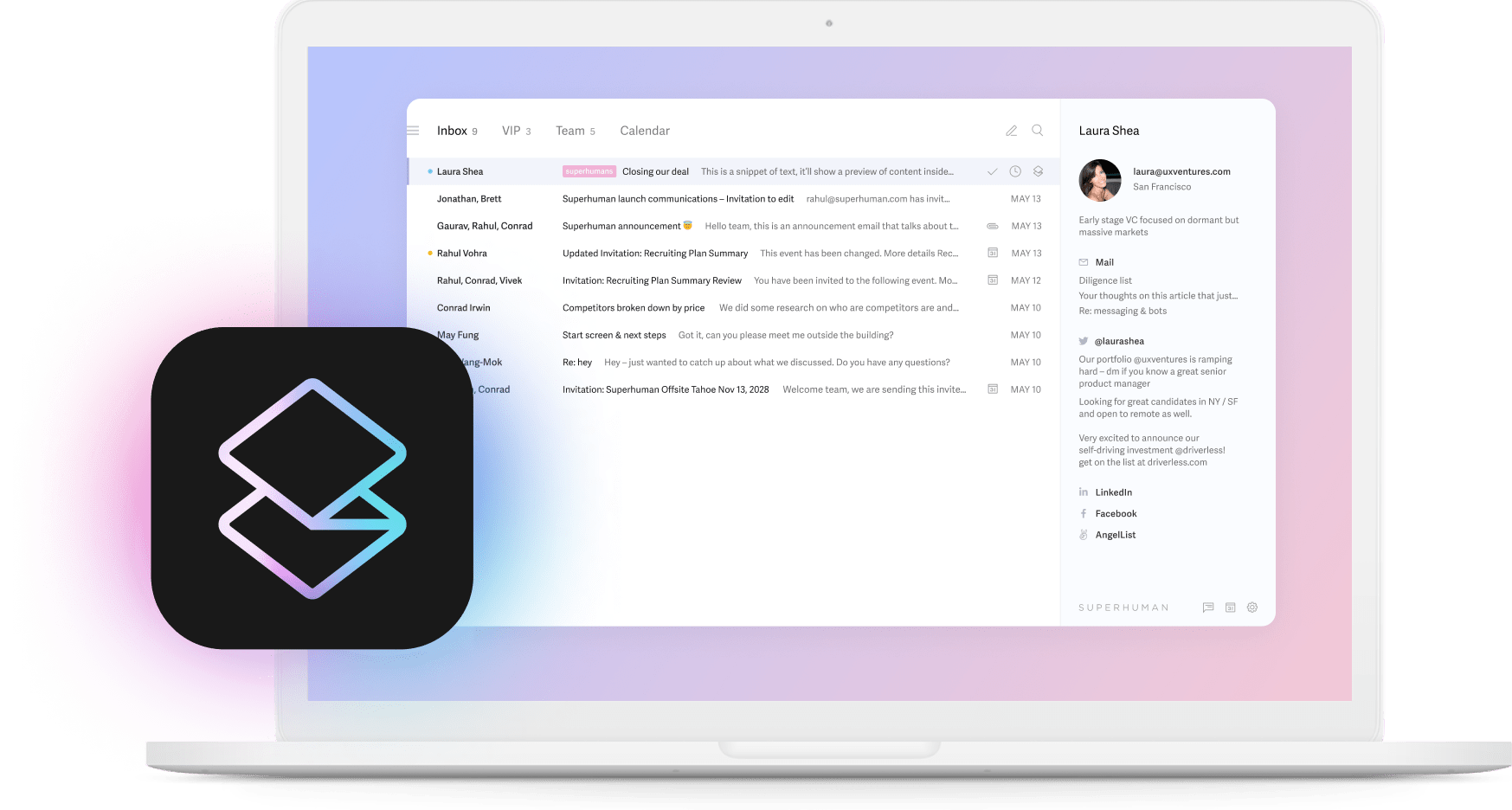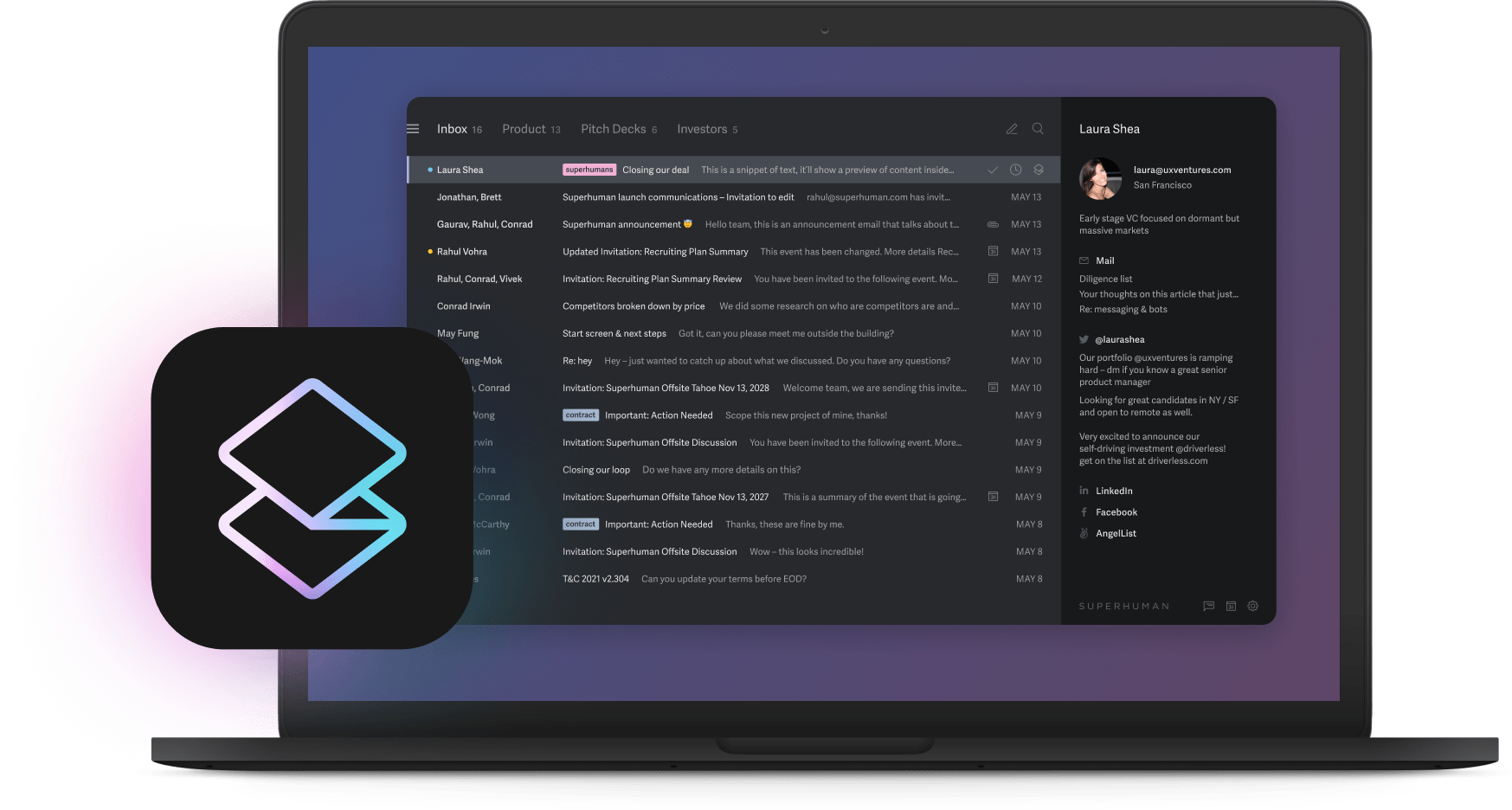
Are you effective at work?
If you had to pause a few seconds before answering that question, or you're still trying to figure out how to respond, you're not alone. It's a vague and challenging question, and everyone might answer it differently. Plus, what does it really mean?
If you don't feel effective, it doesn't mean you're not good at your job, or don't try hard. Even if you're super dedicated and constantly busy, you still might feel unproductive, or worse, be approaching burnout. On the flip side, you may have impactful ideas, but you don't know how to get buy-in from stakeholders and put yourself out there to get noticed, earn more, and move up your company hierarchy.
Regardless of what being effective at work means to you, we can all benefit from relieving stress and upping our work game, whether that means finding more work-life balance, managing our time better, or feeling confident enough to earn more and get noticed for our strengths.
What does it mean to be effective at work?
Being effective at work is somewhat subjective. For some, it could mean contributing to creative endeavors. For others, it could mean achieving a healthier work-life balance or developing strong professional relationships. For most people, it's probably a combination of more than one factor.
People who feel like they are effective at work often say they are:
- Highly productive
- Doing their best work
- Working smarter, not harder
- Engaging in meaningful, high-impact work that moves the company forward
- Getting buy-in for their ideas
- Achieving a healthy work-life balance and well being
- Earning more money and moving up in the company hierarchy
If you want to work towards achieving the above or simply boosting a few skills, read on! We've got seven tips on how to be more effective at work.


7 tips for being more effective at work
Be productive instead of busy
We sometimes misinterpret busy work for effective work.
Being busy, however, doesn't mean your work is impactful. And it doesn't even mean you're productive. It just means you're busy!
I get caught up in the "busy trap" myself. For example, we're in the middle of selling our house, and there's a lot of prep work to do. Instead of preparing for the sale and cleaning out my overstuffed closets, I will busy myself with other tasks like laundry or tidying up my desk to make myself feel like I'm getting work done. But I know deep down I'm not getting the right projects done. So even though I'm "busy", I'm not really productive or doing effective work because it's not moving me closer to my intended goals.
How do you define high-impact or important work that is effective? We break this down a little more in the next section.
Prioritize goal-focused work
In a recent article, we talked about being effective vs. efficient and how efficiency is doing things the right way (with speed, optimized), and effectiveness is doing the right thing (what's right for your business and aligned with your goals).
We can be super busy with work and even do it efficiently. But being efficient is useless (and wasteful) if you're focusing on the wrong tasks.
The key to effective work is being productive with projects that make a huge impact.
Goal-focused work positively impacts your business because it 100% aligns with your company goals and priorities.
It's easy to get distracted with work that seems effective (new trendy marketing tactics, cool software upgrades, tidying up your desk that might not need tidying). But when you dig into your daily task goals, you might find that some aren't 100% aligned with your company's goals, even if you're working super hard.
For example, let's say you're launching a new software feature that enhances the user's login experience. The goal of this enhancement is to reduce customer complaints and churn. But let's say while you're perusing other software for inspiration, you stumble upon another feature that will improve your product. It's so good that you get to work implementing it right away. But is this new feature aligned with your company's goals? Is it wise to start prioritizing this new venture and putting off your current project? If not, even though it might be a good idea, busy work will distract you from your current goals.
Create a "not" to-do list
If you find yourself in a perpetual cycle of busyness, but you're not doing effective work that aligns with your goals, take notice of what you're working on daily. To get more productive and avoid useless work, create a "not" to-do list.
What tasks do you fall back on when you're procrastinating effective work? For me, it's laundry, dishes, and organizing my desk (even if it doesn't need to be organized). So I would put those items on my daily "not" to-do list and avoid them throughout the day to stay focused.
Stay on top of shifting goals and priorities
Proactively check in with leadership and your team to ensure you're aligned on priorities. Sometimes priorities change, and they can get lost in translation if your company works at a fast pace.
Are you busy or productive?
How do you know if you're being busy vs. productive? Find yourself on this chart based on the emotions you feel during your workday.
If you feel like you're not productive enough, read on to learn how to quickly ramp up productivity and get back some time in your day for meaningful work!
Multitask (on autopilot)
I get super conflicted when I think about multitasking. On the one hand, I think I'm pretty good at it, but then experts tell me that it isn't even possible.
You've likely come across dozens of articles telling you not to multitask, and after doing a little research, I can no longer disagree. Neuroscience professor Earl K. Miller says that "multitasking is not humanly possible". You're essentially time-sharing, not multitasking when you do two things at once.
I do have another take on this, however. Sure, multitasking and focusing 100% of your attention on more than one thing at a time isn't possible, but doing multiple things simultaneously (passively) means you can get more done in less time (sweet!). Multitasking is beneficial when the tasks occur on autopilot without requiring your mental focus.
When you throw clothes in the washer, do you sit there idly waiting for the load to finish? I suppose you can, but while it's running, you could also be doing a host of other tasks like managing your email, catching up on phone calls, or checking items off your to-do list. When tasks run on autopilot, you can get multiple tasks done simultaneously.
Set up your work environment to function like this! Here are some work tasks you can set up to run on autopilot (without your full attention and focus):
- Automate email categorization: Fly through your inbox twice as fast and automate your email management with Superhuman's Split Inbox).
- Automate workflows: You can software such as ClickUp or Integrify.
- Automate employee screening: Ask questions that exclude recipients from going further if they don't answer correctly.
- Delegate: Notice what you can delegate to team members to free up your time for more meaningful work.
- Prioritize your challenging tasks: If you can't complete two tasks at once without losing focus, prioritize them in order of importance, and either delegate some work to a team member or schedule them into your calendar.
If you can't stop procrastinating, use it to your benefit instead
Do you know how telling a child to stop doing something makes them want to do it more?
Every time I try to stop procrastinating, I resist avoiding it because I'm focusing so much on what's wrong (I constantly procrastinate) instead of what I really want (to be more productive and achieve my goals).
If you know you're prone to procrastination, instead of resisting it, try working with it! For example, impose a shorter deadline than needed if you have a big project to complete. Why? Because you know you'll wait closer to the end to do it anyways. This way, you have some wiggle room should you need more time after the deadline. Or schedule meetings earlier in the day if you know you're prone to procrastination at the end of the day because you're more tired.
Procrastination loses its power when I focus more on my goals than avoiding what I don't want, and I feel more in control of my day. By focusing on what I want and not trying to suppress my self-defeating feelings, I can replace the concern of potential failure (procrastinating) with excitement and motivation (I am becoming a goal-setting and achieving machine), and all is well with the world.
Now, if you're one of those brave souls who want to try to avoid procrastination altogether (I applaud you!) to make your work more effective, here are some topics to learn more about:
- Use habit trackers to develop better habits.
- Conquer digital distractions in the workplace.
- Learn how to not get distracted while working from home.
- Learn how to stop checking your email constantly.
- Practice a more focused life in a noisy world with digital minimalism.
- Try the Pomodoro technique for staying focused and keeping track of your tasks.
Use this effective time management technique
How does your day typically go? Does it flow something like this?
It's 9 AM, so you jotted down four items on your to-do list you want to accomplish for the day. You start working on the first task, but your colleague messages you and wants to meet to discuss some challenges with a priority project. Because of the urgency, you stop what you're doing and go to the meeting.
The meeting is over, and you need a well-deserved break, so you catch up a little on social media. Oh, look, Bill just returned from his hiking excursion, and you thumb through his pictures, commenting on each one. One hour later, and it's off to check email. The seemingly neverending mountain of emails sucks you in like a tornado, and before you know it, the day is almost over. What were those four things you were supposed to get done today?
If this scenario sounds even close to what your day looks like, time blocking (aka calendar blocking) can help!
Time blocking involves blocking off periods during the day for specific tasks. Segmenting your day is beneficial because it keeps you on track and deters distractions.
How would your day look now if you started it off with time blocking? First, you could have rescheduled that impromptu meeting until later in the day. You knew that you had a more important task to get to at 9 AM because your calendar said so. Then, you would not have been overwhelmed with three hours of email management because you already scheduled two short periods during the day to manage your email. You likely also would have had a break scheduled and could look at your friend Bill's hiking pics then, and it wouldn't have derailed your day.
When you allocate a specific amount of time for your to-do list tasks, you become accountable to yourself. And it's not that difficult to turn your to-do list into a time-blocking list! Here's what a to-do list looks like with calendar blocking.
Read our article on calendar blocking to get even more detail on how to use this system to level up your productivity, avoid distractions, and get stuff done!
Learn how to say "no" to unnecessary meetings
The average employee has at least eight meetings per week, and for executives and CEOs, that number increases to 17.
Though valuable when necessary, some team meetings can be a time sink. Sometimes, catching up on Slack or via email is enough to keep stakeholders in the loop and come to a resolution. No meeting required!
To stay productive, consider auditing and cutting unnecessary meetings that hinder your daily flow and productivity.
For example, maybe you don't need to attend that planning meeting because you're not directly involved and you're also overwhelmed with another priority project. Getting the meeting notes is enough for you to stay in the loop.
But if you're like me, you might have difficulty saying no. Sometimes it's necessary, though, if you're bogged down with work and trying to stay productive. There's a way to effectively and graciously decline a meeting invite when you feel you can contribute async instead.
Ask for clarification
Send a follow-up message to the meeting requester for clarification on the agenda as a lead-in to politely ask if you can sit the meeting out if you don't need to be present.
Here's an example:
Hi [Name], thanks for the meeting invite! Just wanted to follow up and get clarification on the agenda. Do you think I need to be at this one? Or can I follow up with you or another attendee after instead?
Offer follow-up input
If you have something to add to the meeting but it's not a priority for you to attend, let the attendees know you'll create a short video with your thoughts and follow up with everyone via Slack or email.
Recommend a stand-in
If you feel you're not the best person to attend the meeting, recommend someone else to go who will be a better fit. Before you recommend a new attendee, ensure this person is prepared to attend the meeting in your stead.
Partially attend the meeting
Maybe you can contribute to one meeting topic, but the rest doesn't apply. Politely ask if the meeting leader can discuss your topic first, so you can leave right after to work on your other priorities.
Cultivate your executive presence
For some, being effective at work means feeling connected to the company's purpose, which comes with a desire to play a part in its growth.
You might have innovative ideas or creative projects you want to bring to the table. Getting full buy-in from stakeholders would motivate your team and keep projects moving without any hindrances. But getting buy-in from so many people can be challenging, especially if several departments and heads are involved.
Here are some tips on getting stakeholders' buy-in to advance your ideas and creatively contribute to the company's goals and vision.
- Do a little homework: Before bringing your new ideas to the executive table, consider what motivates your team. Are they motivated by financial gains? Career opportunities? Achieving more work-life balance? Assess each stakeholder's values and what motivates them and incorporate them into your ideas to achieve greater buy-in.
- Reaffirm company goals: When communicating new ideas to potential stakeholders, reaffirm your ideas' alignment with the company's goals and vision. This builds trust and helps stakeholders latch onto your vision and participate in its success.
- Show first, then tell: Does your idea have the potential of doubling new software subscribers? Will your concept potentially increase customers' average order value by 10%? Get as granular as possible and show expected numbers and data related to your project's success.
- Welcome feedback and new ideas: When stakeholders have more of a stake in your ideas, they will be more motivated to buy into them and take action. When communicating your ideas, invite stakeholders to contribute their own ideas to enhance your campaigns.
- Not everyone will agree. It's OK to move forward anyways. Getting buy-in doesn't mean that all stakeholders will agree with your ideas, and that's OK. You don't need to convince everyone. You just need enough support to lead your project to successful completion.
Tools to help you be more effective at work
The right tools speed up your workflow, automate tasks, and help you get more done in less time. Next up are some recommended tools to free up some of your time so you can achieve more work-life balance and become more productive.
Communication software:
- Slack
- Google Workspace (various apps and video conferencing)
- Zoom (video conferencing)
- Microsoft Teams
Project management software:
- Asana
- Trello
- Monday
- Zoho
- Basecamp
Task management/team collaboration software:
- Superhuman (email management and collaboration)
- Hive
- Chanty
- Clubhouse (created for developers)
- Casual
How to turn your email into an effective task management system
Email can be both a source of stress and a huge time-suck. Chaotic inboxes, rapid-fire incoming messages, and slow response times are just some of the complaints busy leaders have to contend with. To add to the stress, you probably know that you can tackle the mountain of emails if you put your mind to it, but you just don't have time to give your inbox the attention it needs.
You need the right tools to match your unique workflow and automate your email tasks so you can zip through email management instead of dreading it.
That's where Superhuman comes in.
Never miss an important message again, minimize distractions, and automate email categorization while you sleep. Superhuman's Split Inbox allows you to create splits for urgent priorities so you know exactly where to go every time you open your inbox. Customize your splits based on your unique workflow and allow Superhuman to categorize your emails automatically — so you don't have to.
Superhuman's Quick Quote lets you quickly and clearly reply to long, interview-style emails.
With Send Later, get your message to the top of someone's email inbox — without having to do time-zone math.
With Superhuman, you and your team can collaborate easier and heighten productivity. Fly through your inbox twice as fast as before and get three hours back every week.
More than half of Superhuman's customers hit Inbox Zero within four hours of starting. Plus, you'll enjoy relentlessly refined design that captures your attention and adds a zen-like experience to your day.
If you want to banish email anxiety and experience the fastest email experience ever made, check out Superhuman. We can't wait for you to see the difference it makes!




